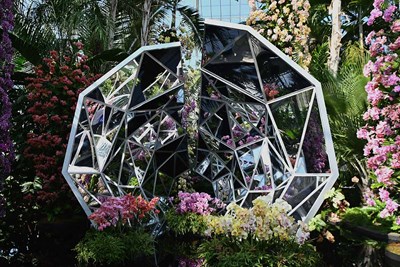Greenhouses are controlled environments designed to cultivate plants by providing optimal conditions for growth. These structures offer numerous benefits for gardeners, farmers, and horticulturists, allowing them to extend the growing season, protect plants from adverse weather conditions, and create ideal growing conditions for a wide range of crops.
Advantages of Greenhouses:
-
Extended Growing Season: Greenhouses enable growers to start planting earlier in the spring and extend the growing season into late fall or even winter, depending on the climate. This allows for a longer harvest period and increased yield.
-
Climate Control: Greenhouses provide control over temperature, humidity, and ventilation, creating an ideal microclimate for plants. This allows growers to cultivate crops that may not thrive in their natural environment and ensures consistent growth and quality.
-
Protection from Weather and Pests: Greenhouses offer protection from extreme weather events such as frost, hail, heavy rain, and strong winds. They also provide a barrier against pests, insects, and diseases, reducing the need for chemical pesticides and herbicides.
-
Optimized Resource Use: By capturing and retaining solar energy, greenhouses reduce the need for artificial heating and lighting, leading to energy savings and lower operational costs. Additionally, water usage can be optimized through irrigation systems and water recycling techniques.
-
Crop Diversity and Experimentation: Greenhouses provide a controlled environment that allows for the cultivation of a wide range of plants, including exotic or tropical species that may not thrive outdoors in certain climates. They also offer a space for experimentation with new crops, growing techniques, and breeding programs.
Types of Greenhouses:
-
Traditional Greenhouses: These are freestanding structures made of glass, polycarbonate, or plastic panels attached to a metal or wooden frame. Traditional greenhouses come in various shapes and sizes, from small hobby structures to large commercial operations.
-
High Tunnels: High tunnels are simple, low-cost structures consisting of a metal frame covered with a single layer of greenhouse plastic. They offer protection from weather and pests while allowing for natural ventilation and increased sunlight penetration.
-
Cold Frames: Cold frames are small, unheated structures with a transparent cover that can be opened or closed to regulate temperature and humidity. They are often used to start seedlings or harden off plants before transplanting them into the garden.
-
Hydroponic Greenhouses: Hydroponic greenhouses use soilless growing systems to cultivate plants in nutrient-rich water solutions. These systems allow for precise control over plant nutrition and growth, making them ideal for growing vegetables, herbs, and flowers.
-
Solar Greenhouses: Solar greenhouses are designed to capture and store solar energy to provide heating during the night or in colder climates. They typically feature thermal mass materials such as water tanks or stone walls to absorb and release heat.
Shopping for Greenhouses
When it comes to purchasing a greenhouse, there are several options available to suit different needs, budgets, and preferences. Whether you're a seasoned gardener looking to expand your growing space or a beginner eager to start cultivating plants, finding the right greenhouse is essential. Here are some common places where you can buy greenhouses:
- Garden Centers and Nurseries: Garden centers and nurseries are excellent places to find a variety of greenhouse options. These stores often carry a selection of pre-assembled greenhouse kits, ranging from small hobby structures to larger, more robust models. Visiting a garden center allows you to see the greenhouses in person, compare features, and get advice from knowledgeable staff members.
- Online Retailers: Online retailers offer a vast selection of greenhouses, making it convenient to browse and compare different models from the comfort of your home. Websites like Amazon, Home Depot, and Wayfair feature a wide range of greenhouse options, including kits, standalone structures, and accessories. Reading customer reviews and product specifications can help you make an informed decision when purchasing online.
- Specialty Greenhouse Suppliers: There are companies that specialize in selling greenhouses and related products exclusively. These suppliers often offer a comprehensive selection of high-quality greenhouse kits, accessories, and customization options. Working with a specialty greenhouse supplier allows you to access expert advice and personalized service to ensure you find the perfect greenhouse for your needs.
- Home Improvement Stores: Major home improvement stores such as Lowe's and The Home Depot may carry a selection of greenhouse kits and supplies. While the options may be more limited compared to specialty suppliers, these stores often offer competitive pricing and convenient financing options. Keep an eye out for seasonal promotions and discounts to get the best deal on your greenhouse purchase.
- Local Builders and Contractors: If you're looking for a custom-designed greenhouse or a larger-scale project, consider reaching out to local builders and contractors who specialize in greenhouse construction. These professionals can work with you to design and build a greenhouse tailored to your specific requirements, taking into account factors such as size, location, and budget.
- Secondhand Markets: For budget-conscious gardeners, exploring secondhand markets such as Craigslist, Facebook Marketplace, or local classified ads can be a great way to find affordable greenhouse options. While used greenhouses may require some maintenance or repairs, they can offer significant savings compared to purchasing new. Just be sure to inspect the greenhouse thoroughly before making a purchase to ensure it meets your needs and quality standards.
No matter where you choose to buy your greenhouse, you should consider factors such as size, materials, climate suitability, and budget to find the best option for your gardening goals. Whether you opt for a prefabricated kit or a custom-designed structure, investing in a greenhouse can open up a world of possibilities for growing plants year-round and enjoying the benefits of homegrown produce and flowers.



